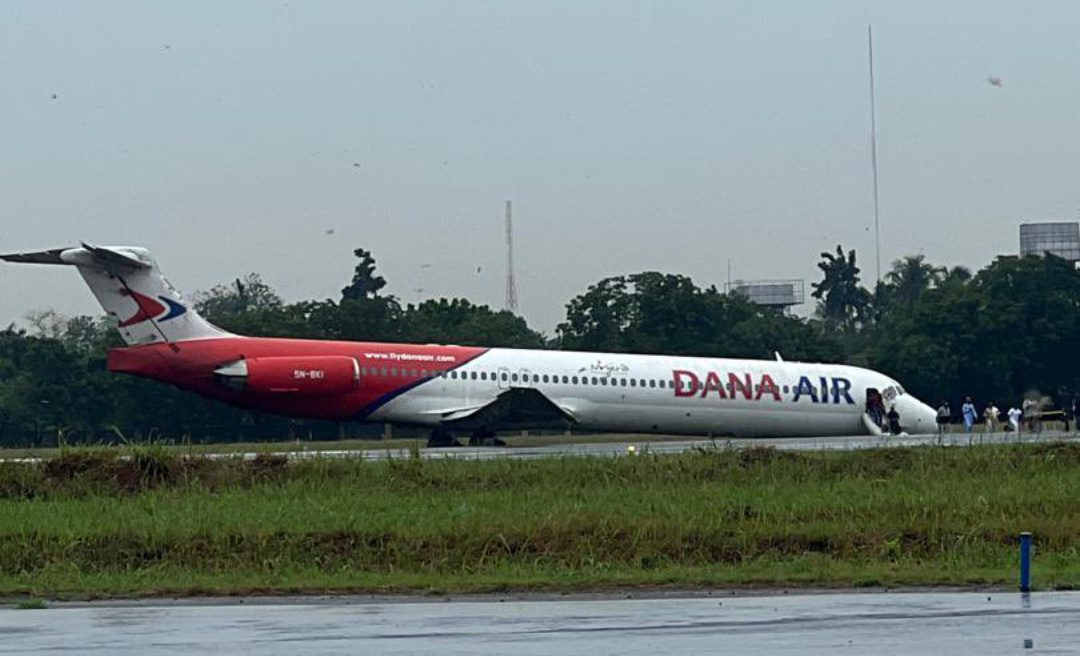Nigeria
Warning was issued to Dana aircraft before crash-landing in Lagos by Investigators

Investigators have disclosed that the Dana Air Boeing MD-82 crew, which encountered a runway excursion during landing at Lagos Airport, was alerted to a nose-gear fault warning while on approach.
On April 23, a Dana aircraft departing from Abuja experienced a runway excursion upon landing in Lagos.
According to reports from the Nigerian Safety Investigation Bureau (NSIB), the crew was notified of a cockpit warning light indicating a nose-gear problem as they were approaching Murtala Muhammed International Airport.
In response to the warning, the crew performed a fly-past to allow air traffic control to visually inspect the status of the nose gear.
Despite efforts to cycle the landing gear and follow an emergency checklist, the warning light continued to persist.
Read Also: BREAKING: Dana Air Incident: Aircraft Skids off Lagos Airport Runway
Observations made from the control tower during the fly-past indicated that the nosegear was extended. Following the fly-past, the crew executed a go-around, realigned with the approach, and proceeded to land on runway 18L.
Preliminary findings from the NSIB suggest that the ground spoilers did not deploy automatically upon landing.
The captain, describing the landing as “soft,” manually activated the speed brakes and engaged reverse thrust before lowering the aircraft’s nose.
The investigation reported that at this stage, the crew noted severe vibration accompanied by a loud noise from the nose-gear area.
As the aircraft decelerated to 80 knots, the nose gear collapsed, resulting in the captain losing directional control.
The aircraft veered to the left, exiting the runway approximately 2,100 meters from the threshold. It proceeded through a grass verge, crossed a paved link taxiway, and came to a halt 2,343 meters from the threshold, around 36 meters from the runway centerline.
Weather conditions at the time included a 5-knot wind from the north, creating a tailwind for runway 18L, and the runway surface was damp.
Following the shutdown of the engines, passengers were directed to evacuate through the forward service door due to safety concerns on the side of the main entry door.
